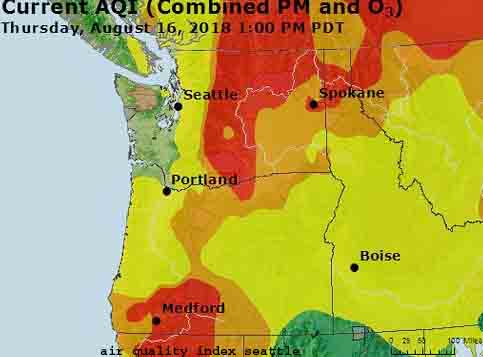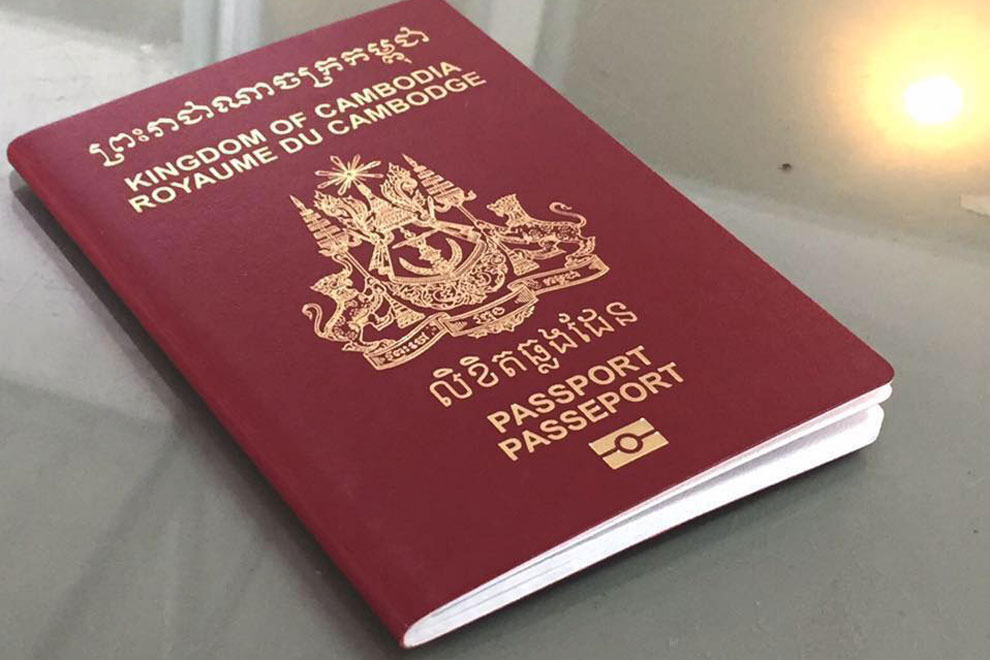
Introduction
The air we breathe is a crucial aspect of our daily lives, impacting our health, well-being, and the environment. In recent years, concerns about air quality have grown, with urban areas facing challenges due to industrialization, vehicular emissions, and other human activities.
One such city grappling with air quality issues is Seattle, known for its picturesque landscapes, thriving tech industry, and a commitment to environmental sustainability. In this comprehensive article, we will delve into the intricacies of the Air Quality Index Seattle, exploring the factors influencing air quality, the significance of the AQI, challenges faced by the city, and potential solutions to mitigate air pollution.
Understanding the Air Quality Index Seattle (AQI)
The Air Quality Index (AQI) is a standardized measure used globally to assess and communicate air quality levels to the public. It takes into account various pollutants, including particulate matter (PM10 and PM2.5), ground-level ozone, sulfur dioxide (SO2), nitrogen dioxide (NO2), and carbon monoxide (CO). Each pollutant is assigned a specific weight, and the AQI is calculated based on the concentration of these pollutants in the air.
The AQI typically ranges from 0 to 500, with higher values indicating poorer air quality and increased health risks. The scale is divided into categories, each associated with a different level of health concern.
These categories range from “Good” (0-50) to “Hazardous” (301-500). Understanding the AQI is crucial for individuals, public health officials, and policymakers to make informed decisions about outdoor activities, especially for vulnerable populations such as children, the elderly, and individuals with pre-existing health conditions.
Factors Influencing Air Quality in Seattle
Seattle, nestled in the Pacific Northwest, boasts stunning natural beauty, but it also faces unique challenges that impact its air quality. Several factors contribute to the dynamics of air quality in the region:
Geography and Topography:
- Seattle’s geographical location plays a significant role in its air quality. Surrounded by water bodies, including Puget Sound and Lake Washington, the city’s air can be influenced by marine air masses. The presence of the Cascade Range to the east and the Olympic Mountains to the west affects air circulation patterns, potentially trapping pollutants in the region.
Urbanization and Traffic Emissions:
- As a bustling urban center, Seattle experiences high levels of traffic congestion, leading to increased emissions of pollutants such as nitrogen oxides (NOx) and particulate matter from vehicles. The prevalence of major highways and the growing population contribute to the challenge of maintaining air quality standards.
Industrial Activities:
- Seattle’s industrial landscape, including manufacturing and shipping activities, contributes to the release of pollutants into the air. Emissions from industrial sources can include a range of pollutants, affecting both local and regional air quality.
Wildfires and Regional Influence:
- The Pacific Northwest is susceptible to wildfires, and the smoke from these events can have a significant impact on air quality in Seattle. The region’s air quality can be influenced not only by local sources but also by wildfires occurring in neighboring states or even countries.
Weather Patterns:
- Seattle’s weather patterns, characterized by frequent rain and cloud cover, can influence the dispersion and concentration of air pollutants. While rain can help clear the air of some pollutants, certain weather conditions may contribute to the accumulation of pollutants in the atmosphere.
The Significance of the AQI for Public Health
The AQI serves as a critical tool for public health, providing information about the potential health risks associated with current air quality conditions. Understanding the AQI allows individuals to make informed decisions to protect their health, especially during periods of poor air quality. Here are the key health categories defined by the AQI:
Good (0-50):
- Air quality is considered satisfactory, and air pollution poses little or no risk.
Moderate (51-100):
- Air quality acceptable; however, there may be concerns for some individuals who are unusually sensitive to air pollutions.
Unhealthy for Sensitive Groups (101-150):
- Members of sensitive groups, such as individuals with respiratory or heart conditions, children, and older adults, may experience health effects. The general public is less likely it to be affected.
Unhealthy (151-200):
- Everyone may begin to experience adverse health effects, and members of sensitive groups may experience more serious effects.
Very Unhealthy (201-300):
- Health alert: everyone may experience more serious healths effect.
Hazardous (301-500):
- Health warnings of emergency conditions; the entire population is likely to be affected.
The AQI provides clear communication about air quality levels, enabling individuals to adjust their activities based on the associated health risks. During periods of poor air quality, people are advised to reduce outdoor activities, especially individuals in sensitive groups, and follow any guidelines or recommendations issued by local health authorities.
Challenges in Maintaining Good Air Quality in Seattle
Despite Seattle’s commitment to sustainability and environmental stewardship, the city faces several challenges in maintaining good air quality. These challenges stem from a combination of local and regional factors and require a multi-faceted approach for effective mitigation. Some key challenges include:
Traffic Congestion and Vehicular Emissions:
- Seattle’s growing population and the resultant increase in traffic contribute significantly to air pollution. Vehicular emissions, including nitrogen oxides and particulate matter, pose a persistent challenge to achieving and maintaining good air quality.
Industrial Emissions:
- The presence of industrial activities in and around Seattle introduces additional pollutants into the air. Striking a balance between economic development and environmental sustainability is essential to address this challenge effectively.
Wildfire Smoke:
- The Pacific Northwest is prone to wildfires, and the resulting smoke can significantly degrade air quality in Seattle. Addressing the impact of wildfires requires both regional cooperation and local measures to protect public health during wildfire events.
Weather-Related Challenges:
- Seattle’s unique weather patterns, including frequent rainfall, can impact the dispersion of pollutants. Understanding and adapting to these weather-related challenges are crucial for effective air quality management.
Public Awareness and Engagement:
- Despite the availability of the AQI, public awareness and engagement remain critical components of addressing air quality issues. Educating the public about the sources of air pollution, the health risks involved, and individual actions that can contribute to better air quality is essential.
Solutions for Improving Air Quality in Seattle
Addressing air quality challenges in Seattle requires a comprehensive and collaborative approach involving government agencies, businesses, communities, and individuals. Here are some potential solutions to improve air quality in the region:
Promoting Sustainable Transportation:
- Encouraging the use public transportations, cycling, and walking can help reduce vehicular emissions. Investing in the development of efficient public transportation systems and infrastructure for cyclists and pedestrians can contribute to a significant reduction in traffic-related pollutants.
Enhancing Industrial Practices:
- Implementing and enforcing strict emission standards for industrial facilities can help minimize their impact on air quality. Encouraging the adoption of cleaner technologies and practices within the industrial sector is crucial for sustainable development.
Wildfire Preparedness and Response:
- Collaborating with neighboring regions to develop effective wildfire preparedness and response plans can mitigate the impact of wildfire smoke on air quality. This may involve early detection, communication strategies, and coordinated efforts to address wildfires promptly.
Green Spaces and Urban Planning:
- Investing in green spaces and urban planning that prioritizes environmental sustainability can enhance air quality. Trees and green infrastructure play a crucial role in mitigating air pollution by absorbing pollutants and providing shade.
Public Awareness Campaigns:
- Conducting public awareness campaigns about the importance of air quality, its impact on health, and individual actions to reduce pollution can empower communities. Education initiatives can also highlight the connection between personal choices and their collective impact on air quality.
Technology and Innovation:
- Embracing technological solutions, such as electric vehicles, air quality monitoring systems, and smart city initiatives, can contribute to better air quality management. Innovation in pollution control technologies and data-driven decision-making can enhance the effectiveness of air quality initiatives.
Government Policies and Regulations:
- Implementing and enforcing strict air quality standards through government policies and regulations is fundamental to addressing the root causes of air pollution. Continuous monitoring and regular updates to regulations based on scientific research are essential for long-term success.
Conclusion
Seattle’s journey towards maintaining and improving air quality is a complex but essential endeavor. The city’s commitment to sustainability, coupled with strategic initiatives and community involvement, can pave the way for a healthier and more resilient future.
Understanding the dynamics of the Air Quality Index, the factors influencing air quality, and the challenges faced by Seattle is crucial for developing effective solutions and fostering a collective responsibility for the air we breathe.
As we navigate the intersection of environmental health and urban development, the pursuit of clean air in Seattle stands as a testament to the broader global effort to create sustainable and livable cities for generations to come.











